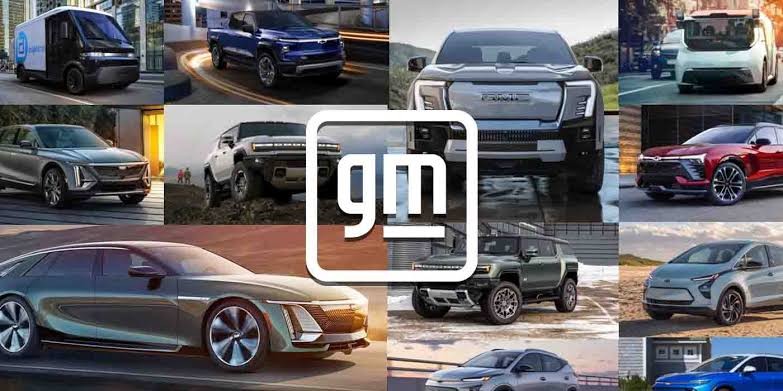General Motors is a leading car manufacturer that offers a diverse portfolio of brands, such as Chevrolet, Buick, Cadillac, and GMC. GM produces vehicles that are innovative, reliable, and safe.
General Motors (GM) is one of the most prominent and influential car manufacturers in the world, with a history that spans over a century. GM is known for its diverse portfolio of brands, its cutting-edge technology, and its vision for a future of zero crashes, zero emissions, and zero congestion. In this article, we will explore the origins, achievements, and challenges of GM, and see how it has shaped the global car industry.
The Origin of GM
GM was founded in 1908 by William C. Durant, a successful businessman who had made his fortune in the horse-drawn vehicle industry. Durant saw the potential of the emerging automobile market and decided to create a holding company that would acquire various car brands and consolidate them under one umbrella. Durant’s first acquisition was Buick, a luxury car maker that had been established in 1899 by David Dunbar Buick. Durant then proceeded to buy other brands, such as Oldsmobile, Cadillac, Oakland (later Pontiac), Chevrolet, and GMC.
Durant’s strategy was to offer a car for every taste and budget, from the low-priced Chevrolet to the high-end Cadillac. He also invested in new technologies, such as electric starters, hydraulic brakes, and V8 engines. However, Durant’s aggressive expansion also led to financial difficulties and conflicts with his shareholders. In 1910, Durant was forced to resign from GM and lost control of the company. He later regained his position in 1916 with the help of Louis Chevrolet, the founder of the Chevrolet brand. However, Durant’s second tenure at GM was short-lived, as he was ousted again in 1920 after another financial crisis.
The Rise of GM
After Durant’s departure, GM was led by Alfred P. Sloan, a visionary leader who transformed the company into a global powerhouse. Sloan reorganized GM into five autonomous divisions: Chevrolet, Pontiac, Oldsmobile, Buick, and Cadillac. He also introduced the concept of planned obsolescence, which encouraged customers to buy new cars every few years by offering new models with improved features and designs. Sloan also expanded GM’s international presence by establishing subsidiaries and joint ventures in Europe, Asia, Latin America, and Africa.
Under Sloan’s leadership, GM became the largest car manufacturer in the world by sales and market share. GM also pioneered many innovations that changed the car industry, such as automatic transmissions, power steering, air conditioning, crash testing, and catalytic converters. GM also diversified into other fields, such as aerospace, defense, electronics, and finance. GM’s success was reflected in its slogan: “What’s good for General Motors is good for America”.
The Challenges of GM
However, GM’s dominance also faced many challenges in the second half of the 20th century. GM had to compete with new rivals, such as Toyota, Honda, and Volkswagen, which offered more fuel-efficient, reliable, and affordable cars. GM also had to deal with labor disputes, environmental regulations, safety issues, and consumer preferences. GM’s market share declined steadily, and its profits dwindled. In 2008, GM faced its biggest crisis ever, as it was hit by the global financial recession and the collapse of the US auto market. GM filed for bankruptcy protection and received a bailout from the US government.
The Recovery of GM
After emerging from bankruptcy in 2009, GM embarked on a major restructuring plan to revive its fortunes. GM sold or discontinued some of its brands, such as Hummer, Saab, Saturn, and Pontiac. GM also focused on improving its quality, efficiency, and innovation. GM invested heavily in electric vehicles, such as the Chevrolet Volt and the Bolt EV. GM also developed new technologies, such as OnStar, a vehicle safety and security service; Cruise LLC , a self-driving car company; and Ultium Cells LLC , a battery joint venture with LG Chem. In 2010, GM returned to profitability and launched an initial public offering that reduced the government’s stake in the company. In 2017, GM regained its position as the largest automaker in the world by sales.
The Future of GM
Today, GM is a leader in the automotive industry, with a vision to create a world with zero crashes, zero emissions, and zero congestion. GM has announced plans to phase out vehicles powered by internal combustion engines by 2035 and achieve carbon neutrality by 2040. GM has also launched BrightDrop , a new delivery vehicle brand that offers electric vans and software solutions for logistics. GM has also partnered with other companies, such as Honda , to collaborate on electric vehicles; Microsoft , to accelerate self-driving cars; and Walmart , to test autonomous delivery services.
GM is a company that has a rich history and a bright future. GM has been at the forefront of innovation and leadership in the car industry for over a century, and continues to push the limits of transportation and technology. GM is more than just a car manufacturer, it is a symbol of American ingenuity and excellence.

Comments (0)
Please login to join the discussion
Be the first to comment on this article!
Share your thoughts and start the discussion